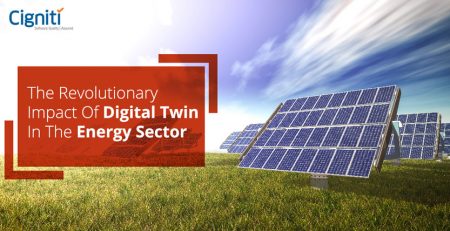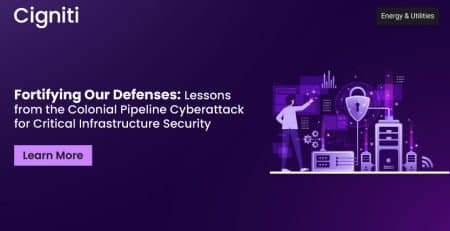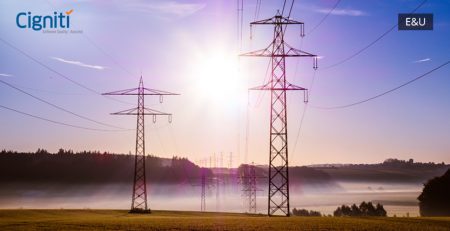What’s Driving Hyper Automation in Energy & Utility Industries
|
Listen on the go!
|
Companies in the energy and utility industries were among the first to implement process automation. Many companies have already automated a large portion of their task scheduling, billing, and account management processes.
The emphasis on separate or segregated processes is fundamentally shifting. Cross-process automation is now being discovered by really smart thinkers as every forward-thinking corporation search for what lies beyond rigid organizational and operational barriers.
However, hyperautomation – extreme automation driven by business goals, with robotics and AI technologies at its core, is required to make these opportunities a reality.
Organizations across sectors are undergoing major business transformations as the digital era dawns and disruptive technologies such as artificial intelligence (AI), blockchain, data analytics, cloud, internet of things (IoT), machine learning (ML), and robotic process automation (RPA) gain traction.
The energy and utility sectors are also quickly recognizing the disruptive roles that new-age technologies can play in enabling corporate growth and process efficiency, and how they have become a crucial accelerator of this transformation story.
Service continuity and operational efficiency are critical in the energy and utility industries. Industry around the globe is witnessing a major transformation in consumer behavior and the way firms operate because of digitization and automation to meet changing market dynamics and expectations.
The creation of new operational and business models that lead to transformational delivery capabilities and increased performance is becoming the new norm as enterprise digital competency becomes the center of an organization. Recognizing the need for change, the energy and utility sector is rapidly adopting hyperautomation and digital technology, as well as undergoing substantial restructuring and redesign.
While a combination of socioeconomic factors and technological innovation is driving energy and utility companies to become digital enterprises, it’s critical to assess emerging technology trends and implement a digital transformation roadmap that’s dependable, scalable, and secure, and can help utilities provide better customer service and improve performance. These solutions are also intended to help businesses achieve their goals, acquire a competitive advantage, and comply with regulatory requirements. This isn’t a simple task!
According to Fabrizio Biscotti, research vice president at Gartner, “Hyperautomation has shifted from an option to a condition of survival. Organizations will require more IT and business process automation as they are forced to accelerate digital transformation plans in a post-COVID-19, digital-first world.”
Companies must create and implement an effective and innovative digital business platform that will help them offer operational excellence while guaranteeing a smooth transition from legacy technology as the energy and utilities sector’s digital journey progresses. It’s difficult to enforce the integration of multiple solution components because many utilities still use legacy apps with proprietary standards. This must be addressed by upgrading specific systems to open standards compliance.
The way energy is sourced, supplied, and used today is being driven by technology. Furthermore, variables such as rising renewable energy adoption, battery storage, distributed grid-edge generation (prosumers), the rise of electric cars, decarbonization, and decentralization are causing unprecedented disruption in the energy and utility sector.
The ongoing COVID-19 pandemic has highlighted the importance of digitization and business continuity, which can be achieved by bolstering IT infrastructure and deploying innovative solutions that result in improved business processes, differentiated delivery models, and the development of new business capabilities.
As firms transform their business processes, the adoption of new-age technologies such as hyperautomation, AI, advanced analytics, cloud, and IIoT is gaining pace and is expected to accelerate. In the foreseeable future, while chatbots and voice help, RPA and hyperautomation will emerge as key technology growth drivers.
Hyperautomation, as we know is a method of combining technologies such as RPA, low-code application platforms (LCAP), AI, and virtual assistants to quickly discover, vet, and automate as many procedures as feasible.
RPA, LCAP, and AI are examples of process-agnostic technologies, which may be utilized in any company for a variety of IT and business use cases. As important enablers of the hyperautomation trend, process-agnostic software will be in high demand. By 2022, the market is predicted to rise by double digits.
According to Gartner, “Combining hyperautomation technologies with improved operational procedures would reduce operational expenses by 30% by 2024.”
In a digital-first world, the shift to hyperautomation will be a critical factor in enabling businesses to achieve operational excellence and, as a result, cost savings.
Read our white paper to find out more about the role of hyperautomation in the Energy & Utility industries.
Conclusion
The necessity of quality and the underlying commercial value have made hyper automation a vital component of the Energy & Utilities (E&U) project delivery, ranging from early integration to assuring the success of mission-critical operations. Hyper automation is essential even during the transformation of critical business applications and infrastructure improvements to enable a seamless and faultless transformation.
Cigniti is familiar with the testing requirements of the E&U landscape, which is undergoing a huge shift from outdated systems to more efficient consumption, manufacturing, and distribution methods. Cigniti provides complete test coverage, test acceleration, and tool agnostic test frameworks to E&U enterprises in the United States, the United Kingdom, and Europe.
Our services strengthen the global E&U ecosystems with precision and high standards of QA to overcome business concerns across production, transport, distribution, consumption measurement, and billing, with capabilities that enrich QA initiatives across change management, compliance programs, and executive monitoring.
Need help? Talk to our hyperautomation experts to know more about what’s driving hyperautomation in the energy and utility industries.





Leave a Reply